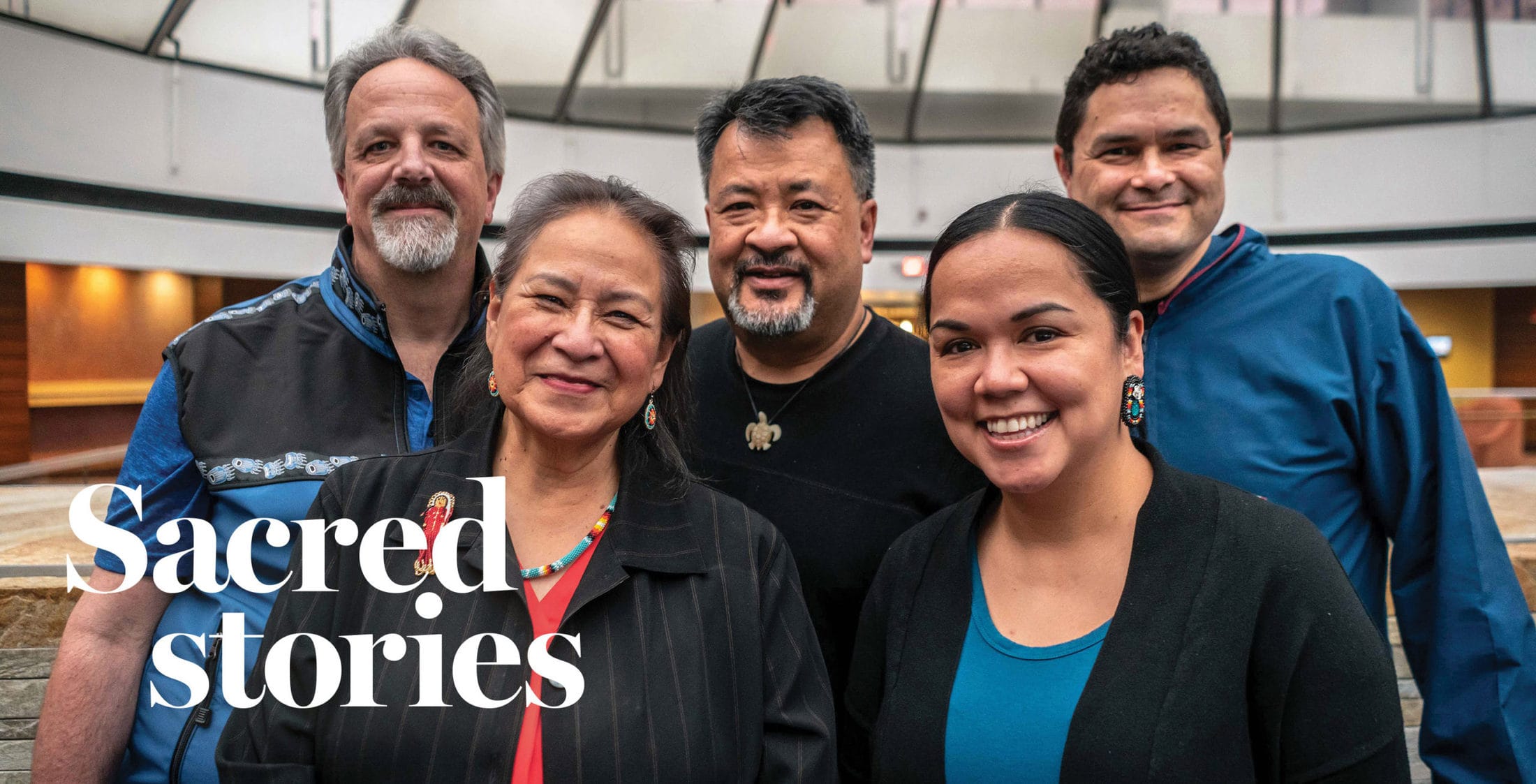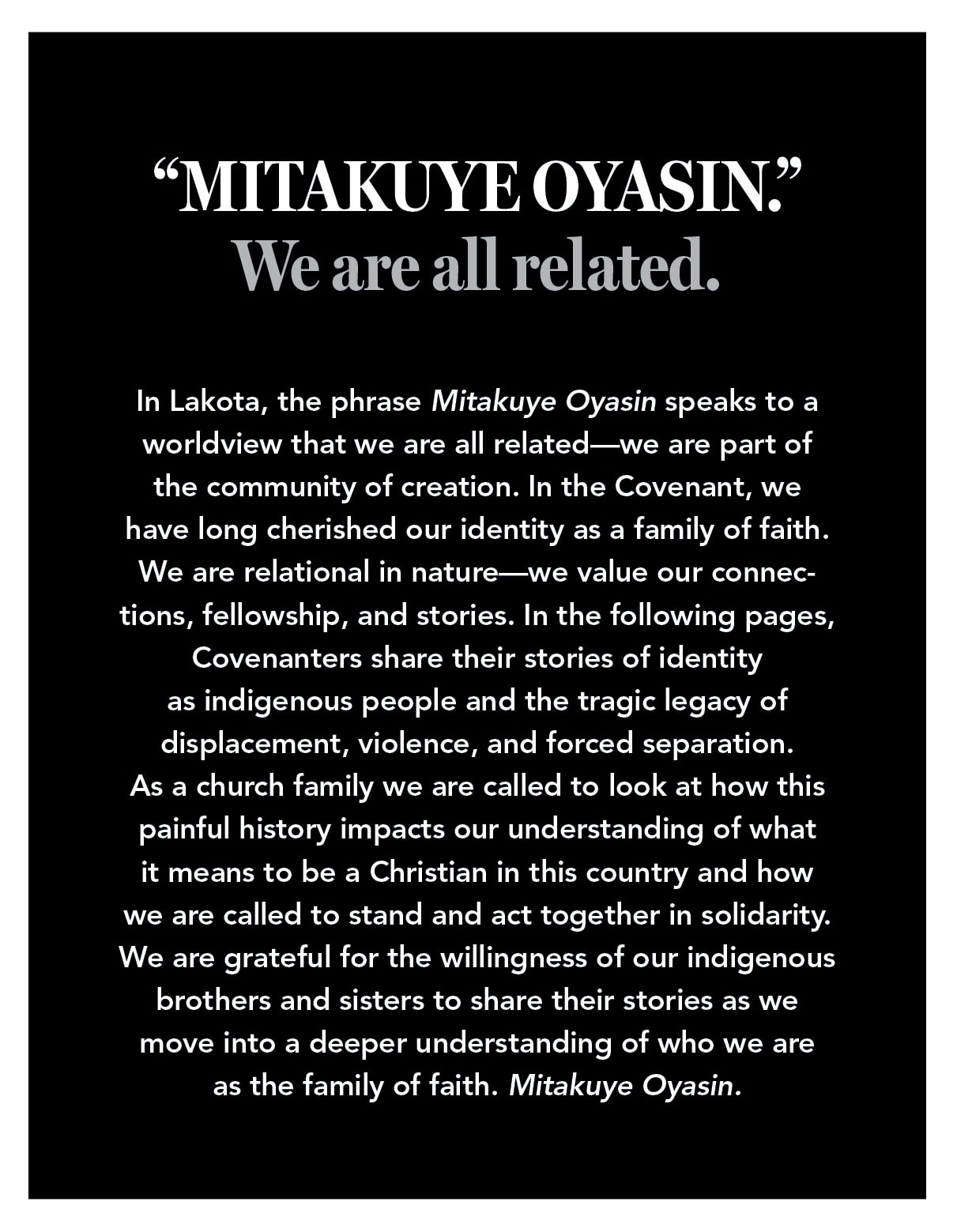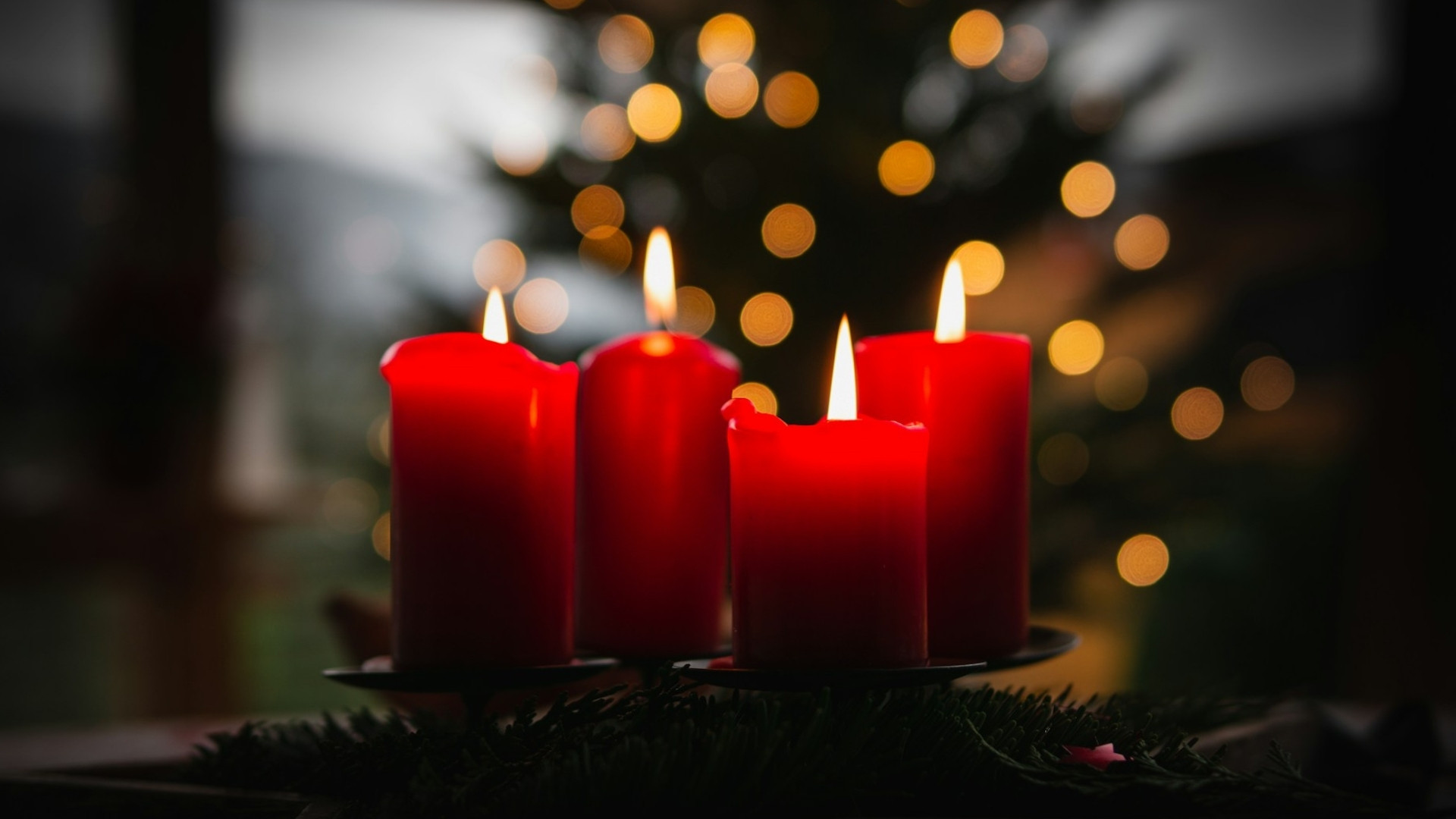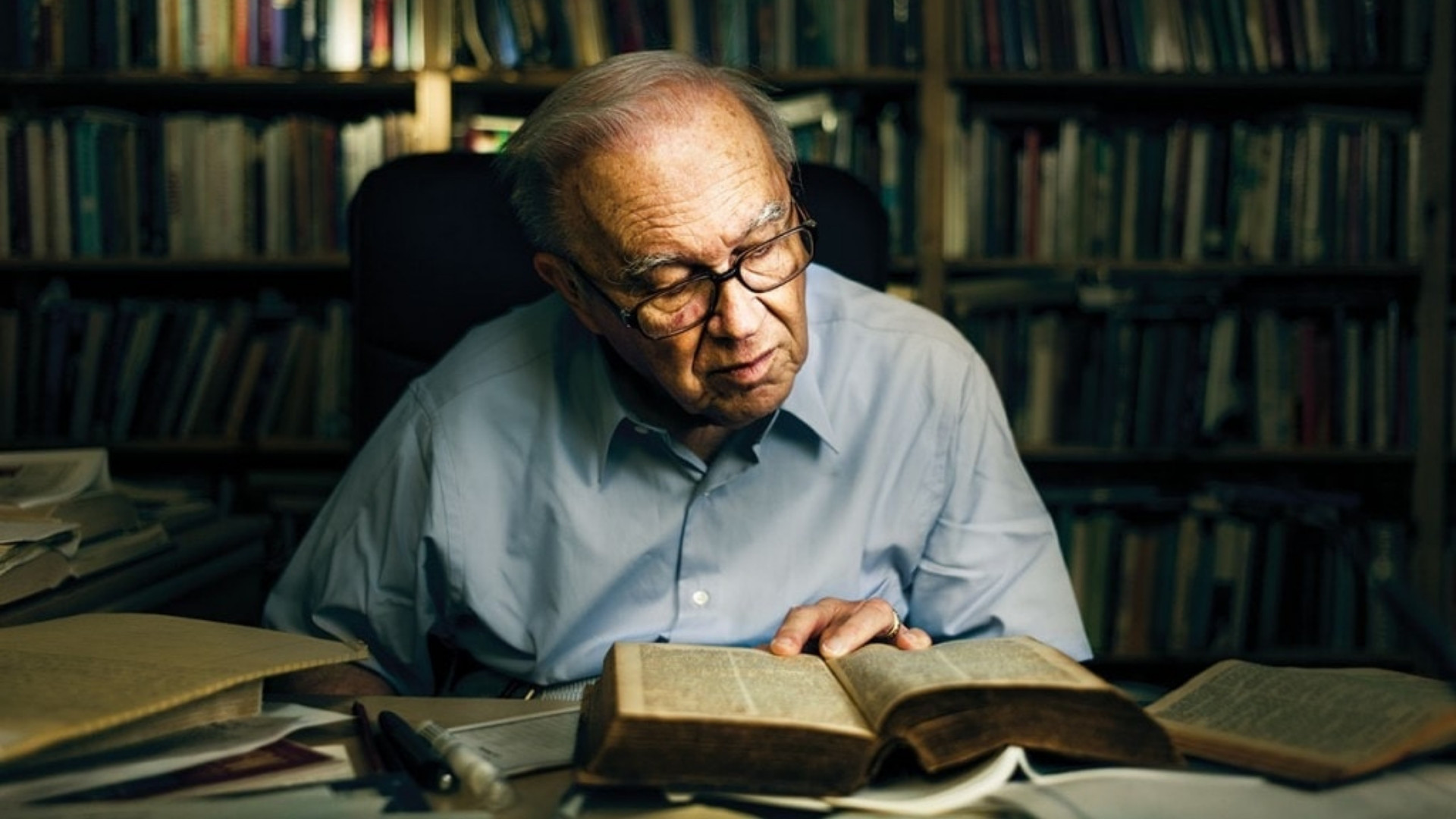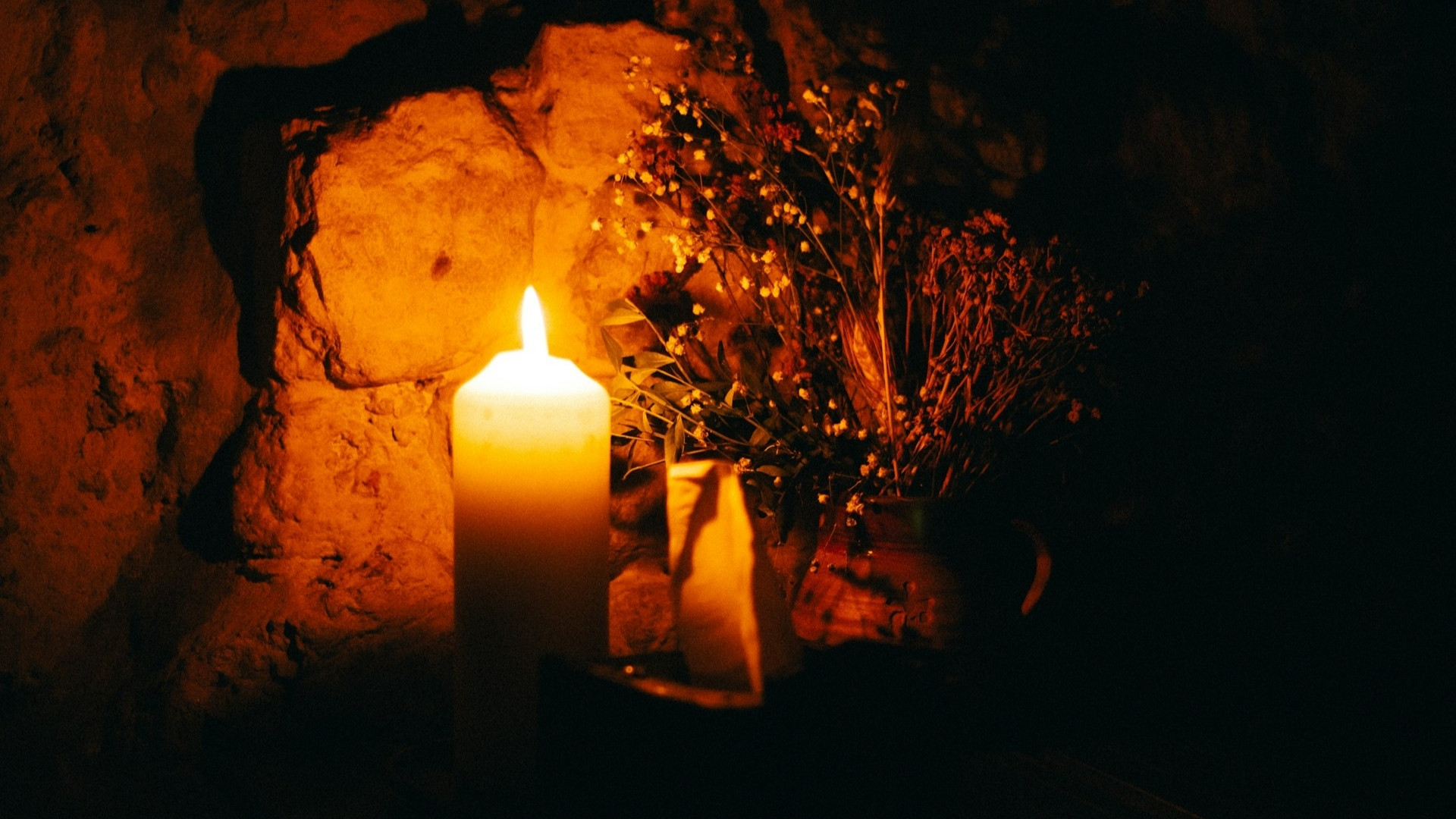Covenant family share the stories of their identity as indigenous people, deepening our understanding of who we are as a family of faith.
Kinship to Creator
A journey into the brutal history of the church brings one Lakota woman into a deeper understanding of her people and her faith.
Lenore Three Stars
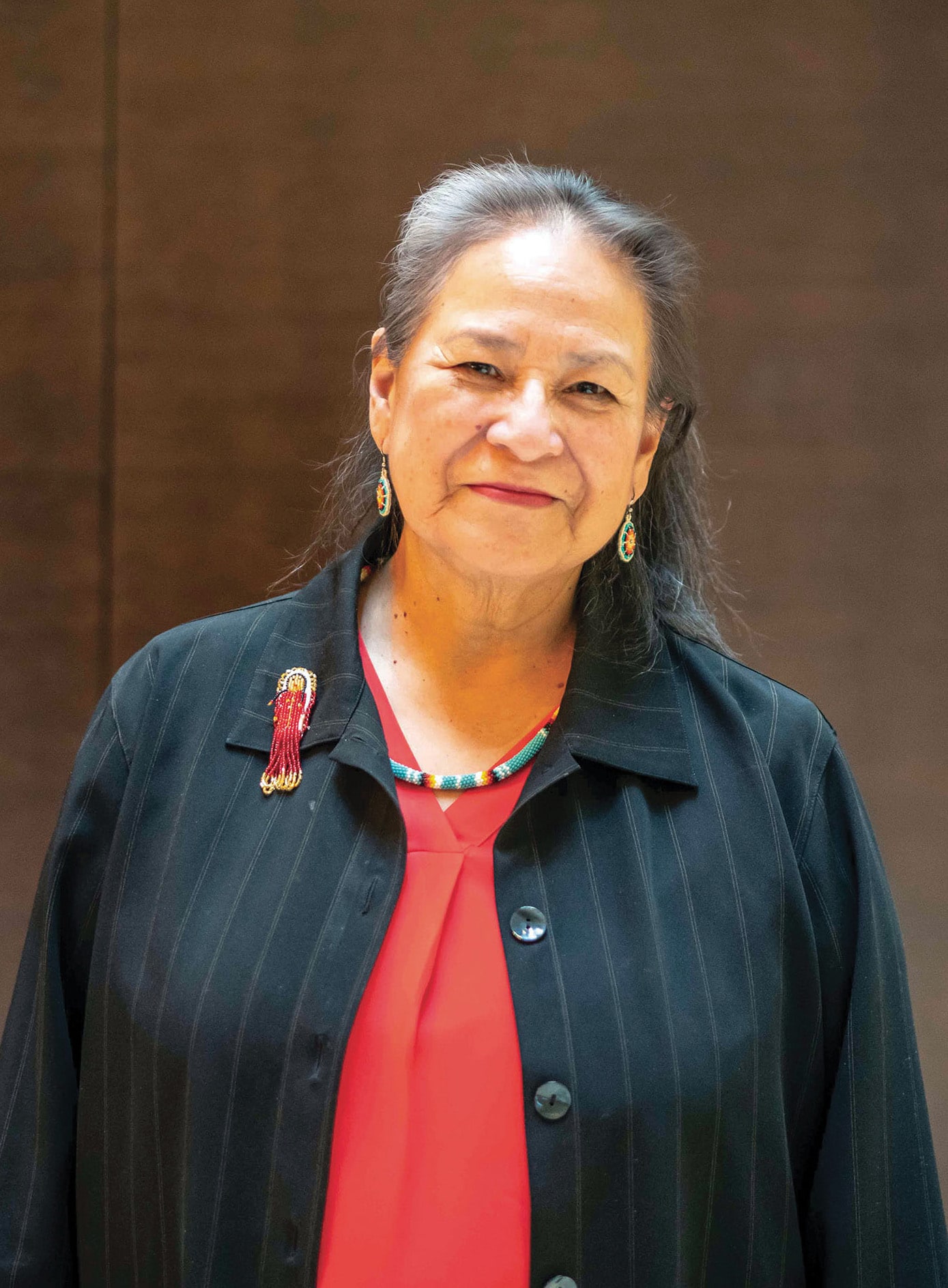
When I meet non-Native people, and they ask me, “Where are you from?” I know it will suffice for me to say that I live in Spokane, Washington. But if I’m meeting Native people and I’m asked that same question, I know they are really asking me who my people are.
Our tiospaye, or family system in my native Lakota language, is very important, so I properly introduce myself by saying that I am Oglala Lakota, born on the Pine Ridge Reservation where my father, Peter Three Stars, was born. My mother, Frieda Garreau Hunter, is Minnecounjou Lakota from the Cheyenne River Reservation. They would know from this information that our ancestral homelands include He Sapa, the Black Hills of South Dakota, where our creation stories live.
This is my story of how I was called to begin a journey of theological decolonization. It represents my own perspective because being Native doesn’t allow me to speak for other Natives or anybody else. I find that I use the terms Indian, Native, and Native American interchangeably because none of them is accurate. To be accurate, we would use what we call ourselves in our Lakota language, which for me is Oglala Lakota. But I grew up with the term Indian—“Grandma and Dad are talking Indian,” and “We’re having Indian soup”—so it feels familiar.
Two Worldviews
It wasn’t until I was an adult that I decided to follow Jesus. It was definitely a struggle for me to get over the threshold of Christianity being “the white man’s religion.” I was coming from the zeitgeist of Native activism against broken treaties and I was wary of being proselytized into the religion of the colonizers. But, through family and new friends, Jesus loved me over that threshold. I wasn’t pushed or shamed or converted. To me, “conversion” sounds like conquest language. I was not won by evangelistic tactics. I responded to Jesus through a relational learning process that enabled me to trust that Jesus is who he says he is and that he loves me.
I was Lakota but my religion was not, creating a slow friction between worldviews. It was inevitable that I would one day yearn to follow Jesus as a Lakota woman.
For the next 23 years, my faith in Jesus was firmly shaped in the western context of Christianity. I didn’t have an understanding then that this religion was known for imposing Euro-culture as its template for civilizing and Christianizing Native peoples. Because my dad had used his G.I. Bill to earn a teaching degree, we moved off the reservation when I was a young child and became “urban Indians,” like the majority of the Indian population in the United States. The acculturation of being an urban Indian enabled me to accept the dualities and ethnocentrism of Christianity as truth.
I was Lakota but my religion was not, creating a slow friction between worldviews. It was inevitable that I would one day yearn to follow Jesus as a Lakota woman.
The journey of decolonizing my theology was inspired by a series of random occurrences. One Sunday I was listening to a preacher identifying the attributes a true Christian will seek to live out, and I heard a list of Lakota cultural values: generosity, courage, fortitude, and wisdom. I wondered how the early mission narratives would have been different if these cultural values had been observed as revelations of the Spirit.
In another instance, a friend commented, “It doesn’t sound like you have many Indian friends who are Christians.” That thought stayed on my heart. For decades, after my dad introduced me to a Covenant church, it was a norm that I was almost always the only Indian in my church circles. I could think of only a few of my Indian friends who called themselves Christian. White, European Christians had been proselytizing Natives for hundreds of years, yet just a tiny percentage of Indians profess to be Christian. Why is that? My sense of unrest grew as some Christian ways of thinking no longer felt at home in me: kingdom analogies, which for me allude to empire; humans as the pinnacle of creation with dominion over all creation; and the common refrain, “This world is not our home, we’re just passing through.”
Boarding schools created a cycle of intergenerational trauma as unresolved grief was passed on to following generations in harmful ways.
One formative occurrence in my journey came when I accepted an invitation to speak to a high-school history class on 20th century Native American issues. It required research, and I learned more than I wanted to know. I understood why I felt more comfortable being a Native Christian around white people than being a Christian around Native people: I didn’t want to be associated—and still don’t—with the horrendous historical trauma the Euro-western church unleashed on Native people in the name of Jesus. Foremost in this brutal period was the Native American Residential School. Studying it had a deep and heavy influence on me.
Dehumanizing a People
Our family oral tradition holds that one of our grandmothers survived Carlisle Indian Industrial School in Pennsylvania, the first military boarding school for Native children, established in 1879. Following the Civil War, Native children were often kidnapped and forced into boarding schools to undergo “Americanization.” The schools were patterned after prisoner of war camps and implemented the philosophy popularized by Lt. Col. Richard Henry Pratt of “kill the Indian to save the man.” As Jacqueline Ottmann, vice-provost of indigenous engagement at the University of Saskatchewan, says, “Instead they killed the child in the Indian,” and often the actual child. From the years 1883 to 1918, according to the Native American Rights Fund Legal Review, there were close to 500 reported deaths of Native children at Carlisle alone.
The government funded the schools and gave over their administration to Christian denominations. According to the National Native American Boarding School Healing Coalition, there were a total of 351 schools in 29 states, administered by 12 denominations.
In 1872, the Board of Indian Commissioners, once a federal entity, assigned 73 Indian agencies to various Christian denominations. School placements became intentionally remote because Native children were still retaining their cultural ways when they were allowed to occasionally connect with their families. Native identity was attacked by elimination of all cultural dress. When children spoke their Native language and practiced any cultural customs, they faced harsh physical punishment. Children who survived boarding schools were left with self-loathing and shame for their own Native cultures. They were institutionally reared in fear and neglect and starvation. They suffered mental, spiritual, and sexual abuse.
Boarding schools devastated the Native pattern of rearing children by extended families. Cultural traditions and skills, as well as tribal knowledge, were no longer taught at the proper times by the proper relatives. Native languages were no longer taught. I am only now learning Lakota because these schools created a deep fear of passing language on to the next generation.
Boarding schools created a cycle of intergenerational trauma as unresolved grief was passed on to following generations in harmful ways. Learning this painful history shed light on why, even now, I don’t know any Native families, including my own, that have not been hurt by alcohol and addiction and abuse.
This research chilled my spirit and created a dark time in my faith. How could Christians treat Native children, some as young as three years old, in such a cold-blooded manner? Where was the good news of Jesus? I thought of my ancestors as children being subjected to the horrors of those times, and I couldn’t help crying, “Jesus, where were you?”
One Sunday I was listening to a preacher identifying the attributes a true Christian will seek to live out, and I heard a list of Lakota cultural values: generosity, courage, fortitude, and wisdom.
As I tried to find insight, I learned about the Doctrine of Discovery, which was promulgated by a series of papal bulls, the first in 1452 by Pope Nicholas V. It authorized King Afonso of Portugal to “capture, vanquish, and subdue the saracens, pagans, and other enemies of Christ,” to “put them into perpetual slavery” and “take all their possessions and property.” It was an evil ideology that actually decided who gets to be human. Indigenous people were dehumanized.
Christopher Columbus was given dominion over new lands with papal authority to subjugate, enslave, and murder indigenous inhabitants in the most depraved ways, which he documented. This ideology continued through the centuries, giving birth to Manifest Destiny in the United States, the belief in a God-ordained territorial expansion and the genocide of Native inhabitants. It is why Natives cannot embrace Columbus Day. When the U.S. celebrates the Doctrine of Discovery with a federal holiday, it speaks to an attitude of exceptionalism and an inability to own its history of genocide.
The discovery principle was instilled in the government and the church, and it has been cited in U.S. Supreme Court rulings. In a landmark case, the U.S. Supreme Court reasoned in Johnson v. M’Intosh (1823) that in 1776, the United States became a successor nation to the right of discovery and dominion from Great Britain. This codified the discovery principle into U.S. law. In that decision, Indians lost their rights to complete sovereignty and have only the right to occupancy in their own ancestral lands, with no right to title.
To offer a spiritual insight of my own, it wasn’t property ownership Native peoples wanted. Native tribes have long held a theology of the land that western cultures do not. Indigenous peoples are connected to their ancestral lands in a reciprocal relationship, and this sense of place is foundational to identity. For the Lakota, our creation stories and ceremonies are connected to our homelands of He Sapa, or the Black Hills. Our creation stories give us the sense that we have always been here. The Lakota call the world Unci Maka, meaning grandmother earth, denoting an ancient kinship. That deep sense of kinship to place is why the world saw the “water protectors” give their all a few years ago when they fought against the Dakota Access Pipeline at Standing Rock Reservation.
I suspect that before European settlers emigrated to Turtle Island, a long-held Native reference to North America, they too had a deep connection to their ancestral lands. But that relationship was severed when they left their homelands, and I have to think it caused unresolved land trauma for them, as well.
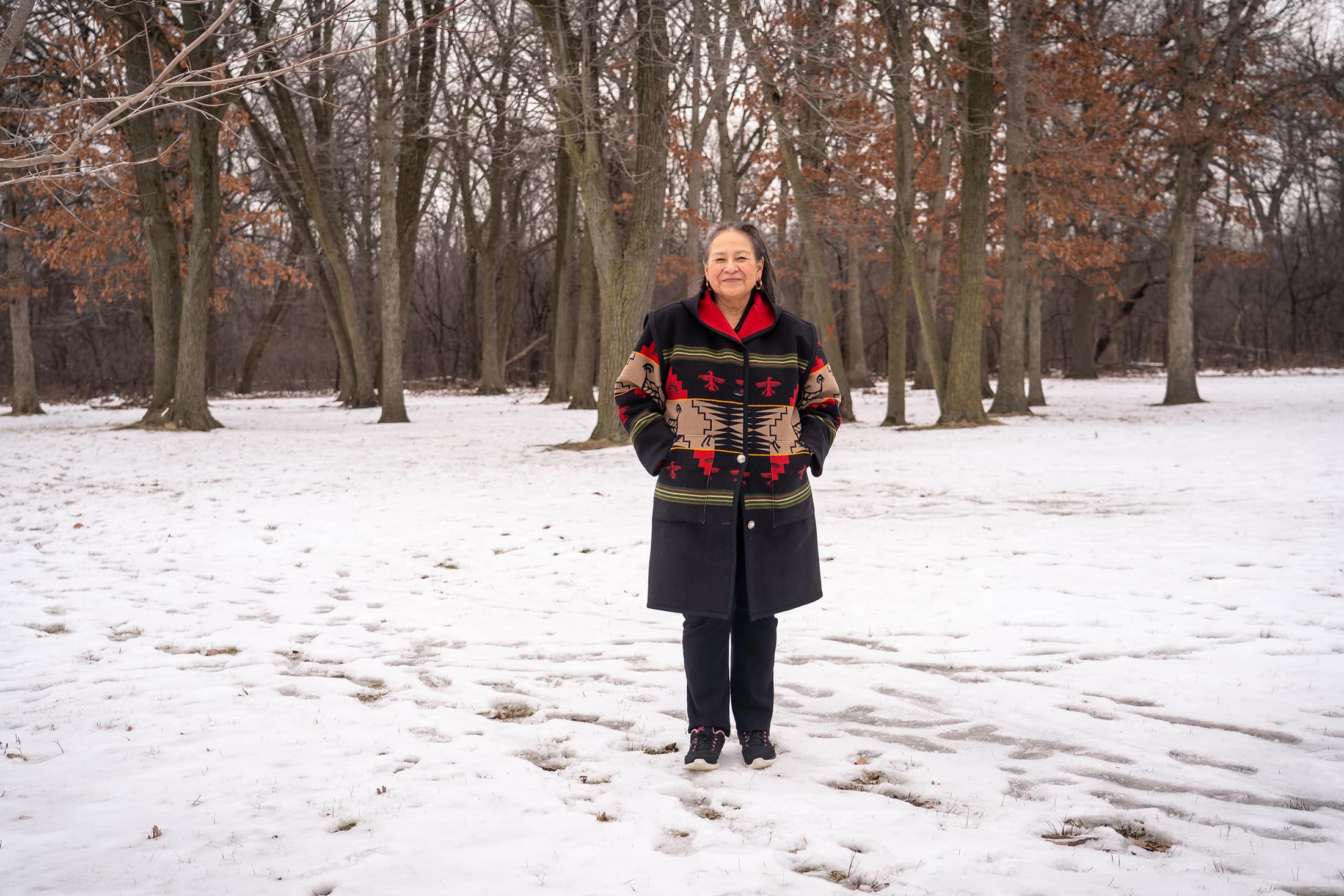
Who Am I Now?
My self-education of Native history in this country opened my eyes and battered my spirit. The historical violence was relentless. Our family tells the story of our Minnecounjou grandmother who survived the Wounded Knee massacre in the winter of 1890. As she raced on her horse away from U.S. soldiers, the baby she carried on her back was shot and killed. It was hard to keep learning cruel truths and understand how to carry the burden as a follower of Jesus.
The Spirit led me to a place where I began to question who I was as a Lakota woman trying to follow Jesus. I wondered about the dual standards for what is sacred in the church but cannot be considered sacred in an indigenous spiritual context, such as an eagle feather, a Native drum, or a dance. Why is the idea of the Holy Land in the Middle East acceptable but not in the Black Hills?
It was a relief to find my Native identity in Jesus. Jesus incarnated as an indigenous tribal man from the Middle East. He showed himself to be a man of great courage, humility, and generosity. I heard it expressed that Jesus was the first Dog Soldier. Just as a Dog Soldier planted himself in the path of the enemy to oppose the attack on his people at the cost of his own life, Creator Jesus chose to give his life for all the people he created and loved. This gospel value of sacrifice had already been revealed in Native culture. How would our collective narrative have changed if the gospel was expressed through an indigenous worldview instead of in colonizing terms?
Indigenous peoples are connected to their ancestral lands in a reciprocal relationship, and this sense of place is foundational to identity.
During these years, three words had been impressed on my heart: “Get your training.” I pushed the words aside because I didn’t know what they meant. I felt like it was too late for me to return to school. One year, at a retreat, a woman I didn’t know told me out of the blue, with some hesitancy, “You’re not too old to go back to school.” It helped me make my move.
I soon met a Lakota man, who told me about the North American Institute of Indigenous Theological Studies, which is accredited through George Fox University. I entered the program and was amazed to find that for the last 20 years, Indian people had already been working on answers to what were new questions to me. There was a place where I could learn about following Jesus from the context of my Native culture. So in a single week, I retired from a 30-year career in investigating federal civil rights discrimination for the U.S. Department of Education, packed up my home, and shipped it across the state. I flew to a symposium to start a missional master’s degree in intercultural studies. I prepared to set foot on a journey of decolonization, to find out what it would be like to follow Jesus as a Lakota woman.
Unci’s Zuya of Decolonization
In Lakota, zuya is a word meaning “life’s journey.” It once referred to a time when a young man would venture out on a journey for self-discovery, returning wiser and fully mature. I am Unci, or grandmother. This journey of decolonization feels very much like my life’s journey—my zuya.
The first surprising thing I learned in my studies is that the Bible does not say everything about everything. And, amazingly, all western theology is not necessarily of Jesus. Since then, I’ve been learning that my primary struggle is with the difference between an indigenous worldview and a Euro-western worldview.
In an indigenous worldview, for instance, all creation is sacred. The Lakota philosophy of life, Mitakuye Oyasin, is a worldview that we are all related, to each other and to all creation, human and nonhuman. We have a kinship relationship with earth and are interdependent parts of the “community of creation,” with reciprocal responsibilities. It’s a worldview with communal values rather than individualistic ones.
I gained theological insights in Native thinking. Randy Woodley, a pastor and professor who is Keetoowah Cherokee, writes that many indigenous cultures have a harmony-balance-shalom construct of some kind, similar to the Hebraic value of Shalom. When right relationship is broken, we are out of balance and it’s our responsibility to find a way to move toward balance. In Native cultures, taking steps back into right relationship is often a tangible spiritual expression, such as ceremony. I see through this lens that “sin” is broken relationship, and Jesus is the healer who restores right relationship.
How would our collective narrative have changed if the gospel was expressed through an indigenous worldview instead of in colonizing terms?
I’m learning to discern dualistic teachings taught with biblical value, such as heaven and earth. I came to understand why that expression, “This world is not our home, we’re just passing through,” did not sit well with me. This thinking tends to devalue the sacredness of earth. Without a theology of the land, we treat Unci Maka, or the earth, as a commodity. One doesn’t need to be indigenous to have an indigenous worldview. Wendell Berry says in Bringing It to the Table: Farming and Food, “There are no unsacred places; there are only sacred places and desecrated places.”
The indigenous perspective on Genesis 1 and “dominion” would be seen from the context of interconnection and responsibility, tending and cultivating the garden, and giving the animals their names in the context of a kinship relationship. Sadly, human dominion has moved from tending the garden to exploiting it.
As I find Lakota values and teachings reflected in Scripture, I’d like to see more indigenous cultural values reflected in the way the gospel is taught. Together, we all represent the image and fullness of our Creator.
Today, I still interact in the western context of Christianity, but I do so as a Lakota woman who is finding spiritual freedom to relate to my Creator and Healer from the context of my Native culture.
I can’t say that decolonizing my faith is a smooth journey, but it has been deeply satisfying. At one point, it shook my western foundation so much that I panicked, wondering, “What if I’m not a Christian anymore?” I dropped out of seminary for a year to re-evaluate what I was doing. I told Jesus, “I’d rather go back into the old Christian box than lose you.” But Jesus calmed my fear, and I sensed his voice telling me, “This is for you. You wanted to follow me as a Lakota woman.”
So I continue my zuya, my life’s journey, with Creator Jesus in the community of creation.

Journey to Healing
TJ Smith on the hopes of the newly
formed Indigenous Ministers Association
by Cathy Norman Peterson
When TJ Smith’s paternal grandfather was ten years old, the federal government forced him and his family to leave their reservation in Redwood Falls, Minnesota. “My great-grandfather was an alcoholic and a hellion,” Smith says. “So the Bureau of Indian Affairs moved him literally as far west as they could.” They relocated the family to the Lummi Nation in the state of Washington, on the Pacific coast, just south of the Canadian border.
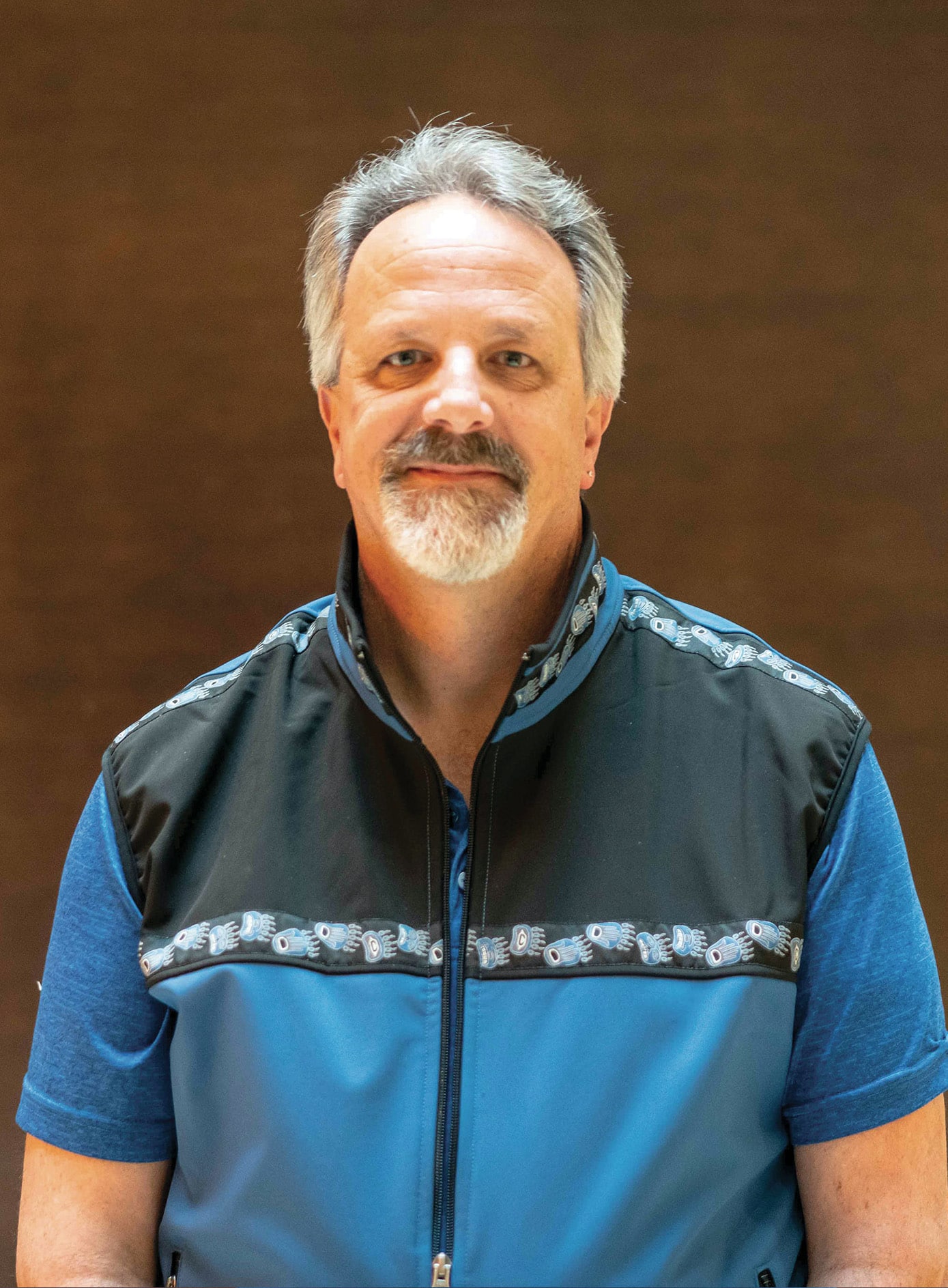
Until the 1950s, Smith’s grandparents were required to register as “off-reservation” Indians. “Because of the shame and guilt of being Indian and having to register as off-res Indians, we never talked about anything,” Smith says. When his grandmother died in 2003, Smith asked an uncle a question about their history. His uncle responded, “Don’t you know our story?”
In a recent interview Smith explains, “You’ve got to remember, according to the Declaration of Independence, we aren’t even human—we’re ‘merciless Indian savages’ in that document. So we don’t count. Because of the shame and guilt, we just never talked about it.”
His uncle adds, “As children, we were told not to associate with Indians because we were to act white. We were told that being Indian was a way of thinking rather than a race. At 80 years, I still feel a void, knowing I have been denied the acceptance of who I am.”
“To say it’s okay to be indigenous was incredibly powerful.”
After his grandmother died, the family started sharing stories. Smith’s father is Dakota and Lakota, and his paternal grandmother was Winnebego. His uncle told Smith about his grandfather’s forced relocation, and that his father and uncles were required to go to the reservation school even though they lived off the reservation.
Later, Smith’s father gave him his maternal great-grandmother’s carved walking stick. She had carried it with her in the 1880’s as she traveled from Kansas to Washington by foot, wagon, and train.
Three and a half years ago Smith participated in his first Journey to Mosaic (J2M), a multicultural ministry experience in partnership between the Love Mercy Do Justice mission priority and regional conferences. The team visited various sites—from Seattle, where they heard stories of Japanese internment camps, to Tacoma, where they learned about Chinese expulsion and undocumented immigrants’ stories, to Yakima, where they heard the story of Hawaii, attended a powwow, and heard stories of the Yakima Nation. “It was a journey of walking through and knowing in my heart who I was,” Smith says.
When the experience ended, he stood in the corner with another participant, weeping. “To say it’s okay to be indigenous was incredibly powerful,” he says. “And it was incredibly hurtful because both of us wept over what our white side has done to our Native side. Most indigenous people are mixed, iyeska in Lakota, and that’s still a battle we sometimes have. But that started the healing journey for me.”
Since then, Smith has continued learning about his culture, learning his language, and healing. He had always planned to go on J2M again, and last November, three years later, he participated in his second journey. “I intentionally wanted to go and ask and see, ‘Where have I healed, and where do I still have blinders on? Where do I still need healing?’”
After several years of serving in youth ministry through Young Life and in high schools, Smith stepped into the role of interim then pastor of New Song Covenant Church in Anchorage, Alaska. He was ordained with the Covenant in 2014.
In Lakota, the phrase Mitakuye Oyasin points to the interconnectedness of all people. “We’re all family.”
Today Smith chairs the Indigenous Ministers Association—the Covenant’s newest association. Members held their first official dinner at the Midwinter Conference for ministers in January, with 11 indigenous people in attendance. Smith describes how moving it was to be together, “to see people in tears around the table, to say, ‘I have a family. My voice is heard, and my voice is cared about in this culture, my language and traditions are accepted.’ It’s not that others haven’t cared, but there’s a uniqueness when you’re with people who have been through the same journey as you.”
To name the association, he says, “we literally did an indigenous thing” by making a communal decision. They contacted indigenous people doing ministry in the Evangelical Covenant Church and considered five or six options. Together they agreed on the name.
Additionally the Covenant’s Ethnic Commission, composed of the chairs and representatives from all four ethnic associations (African American Ministers Association, Covenant Asian Pastors Association, Ministerios Hispanos del Pacto Evangélico, and now the Indigenous Ministers Association), has been renamed the Mosaic Commission. Recently President John Wenrich announced his resignation as chair of the commission, a role that has been filled by the denomination’s president since it was formed as a stand-alone commission in 1995. Intentionally leaning into the Covenant’s value to practice solidarity with brothers and sisters of color, Wenrich ceded his seat to Mary March, who chairs CAPA.
“As a denomination, we recognize and include indigenous peoples in our purposeful narrative,” March says. “As a church, we have been made aware of the multi-generational impact of poverty, hopelessness, loss of identity, and suicide on indigenous people because of the Doctrine of Discovery.”
Now we are being asked, she says, what will we do about that? “Our response is to recognize this association, to give them a voice they have not had, and to name them as part of our family. We desire to give them space to share their stories from their heart and know their stories as our own.”
Smith says he and other ministers are now dreaming about the future—including someday sharing indigenous worship practices at a Covenant event, such as sitting in silence in contemplative prayer or leading worship with drums and in their regalia. “What if we receive an indigenous stole when we are ordained?” he wonders.
In Lakota, the phrase Mitakuye Oyasin points to the interconnectedness of all people. “We’re all related, all my relatives,” Smith says.
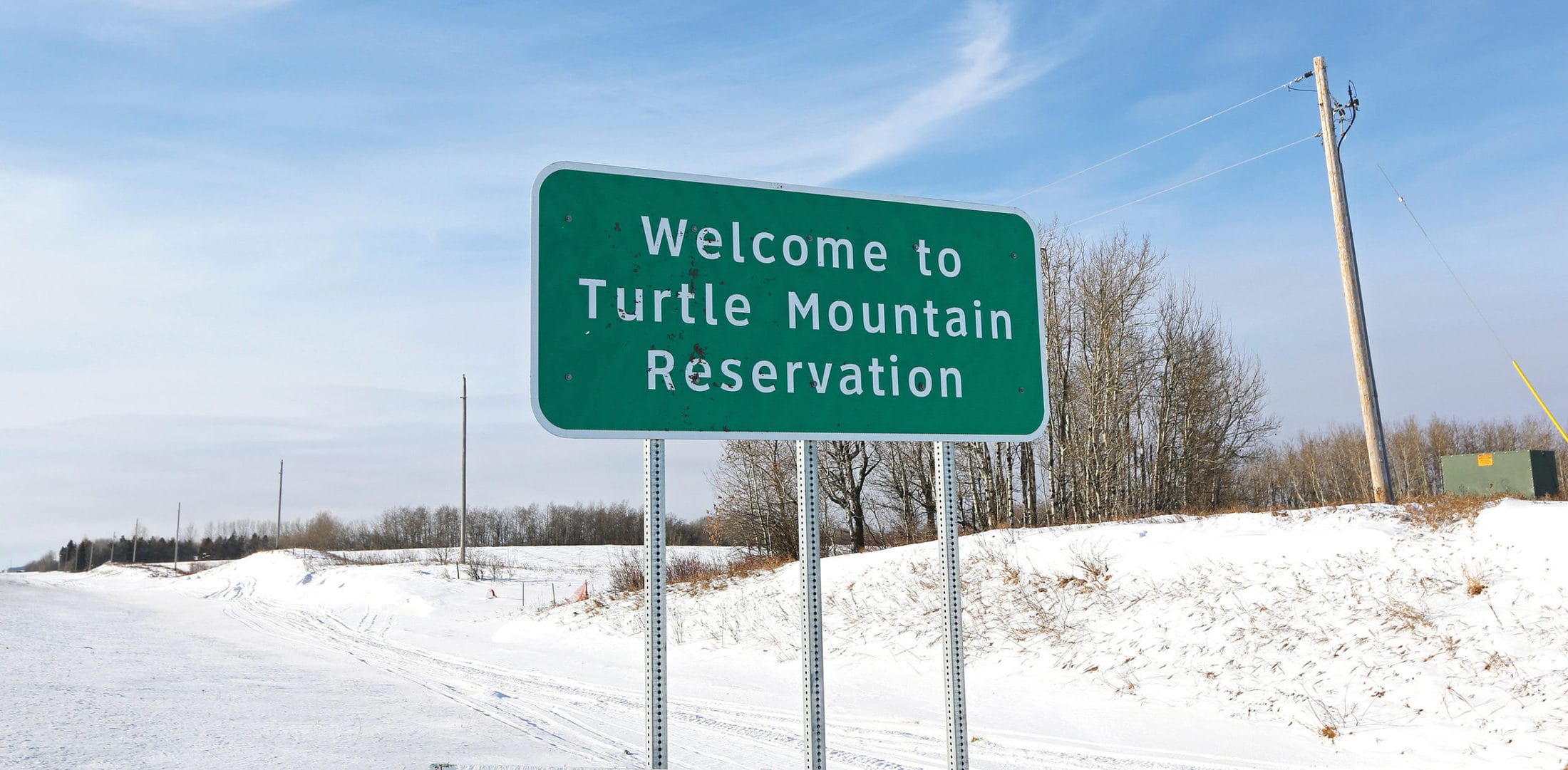
Planted in Turtle Mountain
Returning to family roots, Anna and Roger Ross left a comfortable life in Minneapolis to start a Covenant church on a reservation in North Dakota.
by Erin Chan Ding
TURTLE MOUNTAIN RESERVATION, NORTH DAKOTA—The staff at the Utter Stop here at the corner of Highway 281 and BIA7 at the northern edge of North Dakota will run out and fill cars without expectation of a tip, even in the middle of winter when the ground is covered with snow and temperatures are well below freezing.
The stop has vending machines at its entrance that sell Dubble Bubble gum for a quarter and Unicorn Fluff—a kind of neon-colored slime—for 75 cents.
When Anna and Roger Ross walk in, it feels like a block party. The couple saunters to a back counter, where Emily Jo McCloud, Anna’s goddaughter, takes orders.
“Is the BLT good?” Anna asks her.
“Can a BLT be bad?” Emily replies, and they both laugh.
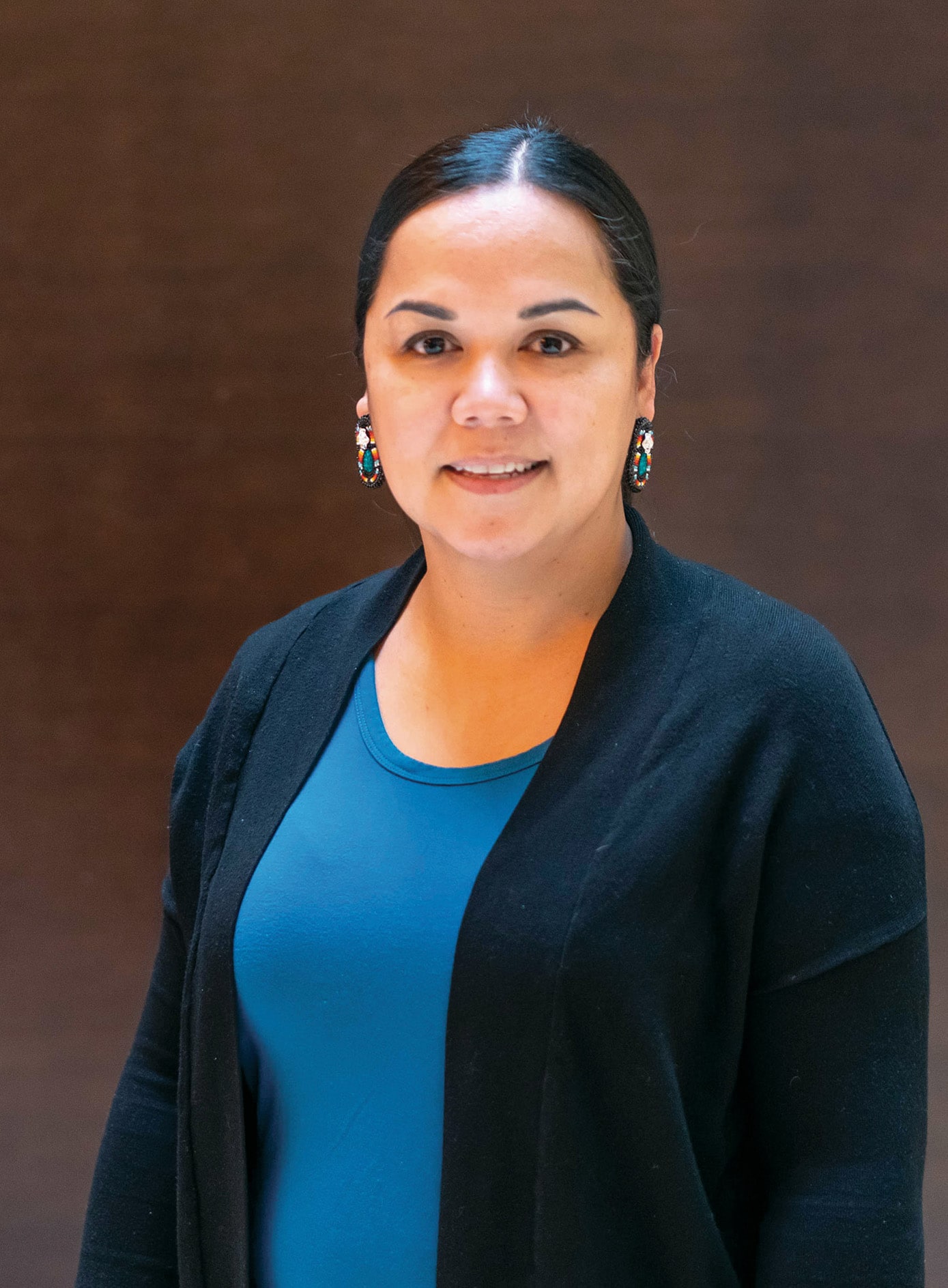
As they wait for food—they end up ordering nachos and a salad—they run into Jake McCloud, Emily’s uncle. Emily’s grandpa, Richard McCloud, who founded the Utter Stop (as in the Other Stop), works the cash register. Minutes later, Marilyn Decoteau, Anna’s aunt, walks up to the Rosses’ table.
“Marilyn is going to be on our church planting team!” Anna says.
Decoteau says she doesn’t know much about the church yet, but she loves God and loves Anna and Roger.
That’s how things are here in Turtle Mountain, where the Rosses are planting the only Covenant church on a Native American reservation. People greet them with high-fives and handshakes wherever they venture—the Utter Stop, Turtle Mountain Community College, the Fire’s Edge Steakhouse.
The reservation, composed mostly of 16,000 members of the Turtle Mountain Band of Chippewa (also known as Ojibwe), marks the place where Anna lived from the age of seven months until she graduated from high school and where Roger has led youth sports programs for years.
“We’re not coming into the community and doing something to the community,” Anna says. “We’re part of the community already.”
“We’re not coming into the community and doing something to the community. We’re part of the community already.”
Turtle Mountain is a microcosm of the trauma that has been inflicted over the centuries on Native peoples by the government and often sanctioned by the church in an effort to “Christianize” them. Now a 6-by-12-mile parcel of land 25 minutes from the U.S.-Canadian border, the territory claimed by the Ojibwe once stretched for 10 million acres into western Minnesota.
In the McCumber Agreement of 1892, despite fierce protest from Chief Little Shell of the Turtle Mountain Band, the U.S. government compensated the tribe ten cents for every acre it seized, paying $900,000 for nine million acres of land, the reason the agreement is commonly known as the “Ten-cent Treaty.” Shortly afterward, the number of townships inhabited by the Turtle Mountain Chippewa shrunk from 22 to two, into the 6-by-12 miles it measures today.
The roots of treaties like these lie in Manifest Destiny, the belief embraced in the mid-19th century that America had a God-given mandate to expand westward, and in the Doctrine of Discovery, a series of papal bulls issued in the 15th and 16th centuries (and extended by Thomas Jefferson to the U.S. government) that called for the colonization and overthrow of Native peoples, equating the European conquest of indigenous lands to the benefit of the church.
In the past decade, such Protestant denominations as the Episcopal Church and the United Methodist Church have begun repudiating the Doctrine of Discovery and Christianity’s inimical role in propagating and perpetuating it. In the Covenant, the Commission on Christian Action is working on a proposal for such a resolution. Paul Robinson, executive minister of Love Mercy Do Justice, says the commission will then present a draft of the resolution to the Covenant’s Executive Board and to the Covenant Annual Meeting so it can be circulated among churches and then offered for discussion and a vote at a subsequent Annual Meeting.
As for the document itself, Robinson says, “We want to make sure we have some tangible evidence that we’re standing in solidarity with marginalized people. So I feel like we need to join the larger faith community and say this was a mistake by Christians to be complicit in this doctrine that really works against the imago Dei.”
Lenore Three Stars, who serves on the commission, says the document “can’t be just a checklist, like ‘We’re one of the denominations that agrees we should repudiate the Doctrine of Discovery.’” Three Stars, who is Lakota, says that in order for structural change to occur, there has to be “more things like using Native standards to plant a church, using Native standards to ordain or license Native leaders.”
“It was shameful to know your own language… I felt cheated out of my history.”
Anna Ross calls a repudiation “absolutely valuable,” but says Christians must acknowledge how the Doctrine of Discovery has impacted where we are now and how it will continue to impact the church.
“You can talk about the history of boarding schools” in which the U.S. government, with support from both Catholic and Protestant churches, relocated Native children to boarding schools that forbade indigenous languages and clothing and where cases of severe abuse have been documented. “But unless you can make the connection to how it’s impacted the community now, people underestimate its impact,” she says.
“People will talk about alcoholism and the high unemployment rate,” she says. “Yet we conveniently never talk about how Native children were put in boarding schools and taught how to type and be carpenters, and then sent back to the reservation that doesn’t need secretaries or carpenters. Of course, they’re going to be unemployed. You took them away from the community that would have trained them into a role they need to be in order to see that community thrive.”
On a recent Wednesday in Turtle Mountain, Anna drives past communities on the reservation named Barnsville and Turtleville, which are filled with unlivable homes including some mobile homes and housing donated after natural disasters such as Hurricane Katrina that were never meant to withstand North Dakota winters. Too often, whole communities have been torn down after a decade or two.
The stripping of Native culture—and the role of the church in causing that harm—has resulted in generational trauma that to this day has made it difficult for indigenous people to see Christianity as separate from colonialism. For a while, Anna stopped going to church altogether because of the tension between her indigenous identity and the history of the church’s aggression in assimilating Native peoples.
Anna also speaks of her grandparents forbidding her to attend school powwows, in part because of what the church she attended as a child taught them. Her grandparents both attended Native American boarding schools, where they were discouraged from learning their own languages.
“I remember him saying, ‘I don’t speak Indian,’” she says of her grandfather, adding that because of that, he didn’t teach her Ojibwe when she was a child. “It was shameful to know your own language…I felt cheated out of my history.”
Anna and Roger keep an affectionate rapport between them, holding hands at the Utter Stop or touching heads amid a wide expanse of snow that overlooks the Anishinabe Campus of Turtle Mountain Community College.
Born in Washington State where her mother, who is Ojibwe, and her family had moved during the Bureau of Indian Affairs’ voluntary American Indian Urban Relocation programs (her father, whom she’s never met, is Filipino), Anna moved to Turtle Mountain with her grandparents, who took custody of her when she was seven months old.
She graduated from Turtle Mountain High School, where she had been a cheerleader, captain of the dance team, and class president. She and Roger, who grew up in Denver, first met in Kansas two decades ago while they were working at the Boys & Girls Club in Lawrence. About eight years later, they reconnected on Facebook.
“She found me!” Roger says.
“He likes to say that, like I was searching for him,” Anna says, laughing. “And then five seconds later, he’s messaging me.”
She remembered Roger’s faith and asked him to be her accountability partner. Every day, they read Scripture and prayed together.
“I tell people I fell in love with him spiritually before I thought about him any other way.”
They dated for eight months before they got married. They have four kids ages four to 20.
Roger says that although much of his African ancestral lineage was stolen from him because of slavery, he has the opportunity to celebrate the Native cultural heritage of his children through Anna.
“I was introduced to drums, which are a big part of African culture, so there are some similarities,” says Roger. “I love being a part of the powwows.”
The call for Anna, 41, and Roger, 39, to plant a church in Turtle Mountain came when they were living in Minneapolis and part of the planting team at Epiphany Covenant Church in the southern part of the city.
“Last year, around New Year’s, Roger told me he feels like God is calling him back to the reservation to preach and start a church,” Anna says. “And I said, ‘No, he’s not. God talks to me all the time and never mentioned that to me.’”
She told her husband she needed some kind of confirmation, and then one Sunday, their pastor, Kevin Farmer, preached on Moses, describing how some people need to return to a place of bondage in order to allow other people to come out of it as well.
“And it was literally like there wasn’t anybody else in the room, and he was just looking at me,” she says. That was the confirmation, she says. “I guess I started to feel more at peace.”
She still had some trepidation about leaving her six-figure job to move to Turtle Mountain, where unemployment stands at 60 to 70 percent. But then leaders in the community reached out with potential job opportunities for both of them that matched with co-vocational ministry. They sold their house in less than one week.
Roger is now CEO of the local Boys & Girls Club and director of the marshmallow-colored Byron Dorgan Wellness Youth Center. Anna leads the tribe’s community development corporation.
“There were just so many confirmations,” Anna says, “that this was where we were supposed to be and what we were supposed to be doing.”
They are tentatively calling the plant Turtle Mountain Epiphany Church.
Mike Brown, director of church planting for the Northwest Conference, says he’s “hopeful this could open the door to planting churches on other reservation land with other Native pastors. Maybe it becomes the first of many that would open the door for us and bridge a gap and bring some healing that’s long overdue.”
Farmer says he envisions the church to be a multiethnic congregation with a bent toward Native culture. As the sending church, Epiphany arranged for Farmer and a group of about 15 church members to make the nine-hour drive there to affirm the church plant. Farmer says he is intentionally investing in the Rosses, as Covenanters like Debbie Blue and Efrem Smith did with him, “because they don’t fully get what they’re getting into. It keeps them squarely dependent on God. The minute you say, ‘We’ve figured out all this,’ then there’s no room for God.”
“There were just so many confirmations that this was where we were supposed to be and what we were supposed to be doing.”
The unknowns remain numerous. The Rosses passed the Covenant’s intense assessment center screening last year. But they have not identified a specific location. They may lease space from the Assemblies of God worship center. Or perhaps the auditorium at the Turtle Mountain Community College, where a star quilt hangs above the stage. A multi-colored medicine wheel emblazoned in the foyer floor greets entrants.
They’ll need to figure out how to plant a church, work full-time jobs, and care for Anna’s grandparents while raising their kids. They’re asking for a lot of prayer.
In late January during the Evangelical Covenant Church’s Midwinter Conference in Chicago, on land once inhabited by the Ojibwa, Ottawa, and Potawatomi tribes, Anna and Roger stood among a half-dozen church planters to sign a covenant agreement to plant a church as their four-year-old daughter, Ariah, looked on from a nearby table. Behind them, Curtis Ivanoff, superintendent of the Alaska Conference, and TJ Smith, chair of the Indigenous Ministers Association, laid hands on Anna’s and Roger’s shoulders after they signed.
Ivanoff took the microphone and prayed for them in Inupiaq. Smith followed in Lakota, a neighboring tribe of the Ojibwe. After the prayer, Anna looked up with tears in her eyes and smiled, telling Smith she recognized some of the words. It sounded just like church should.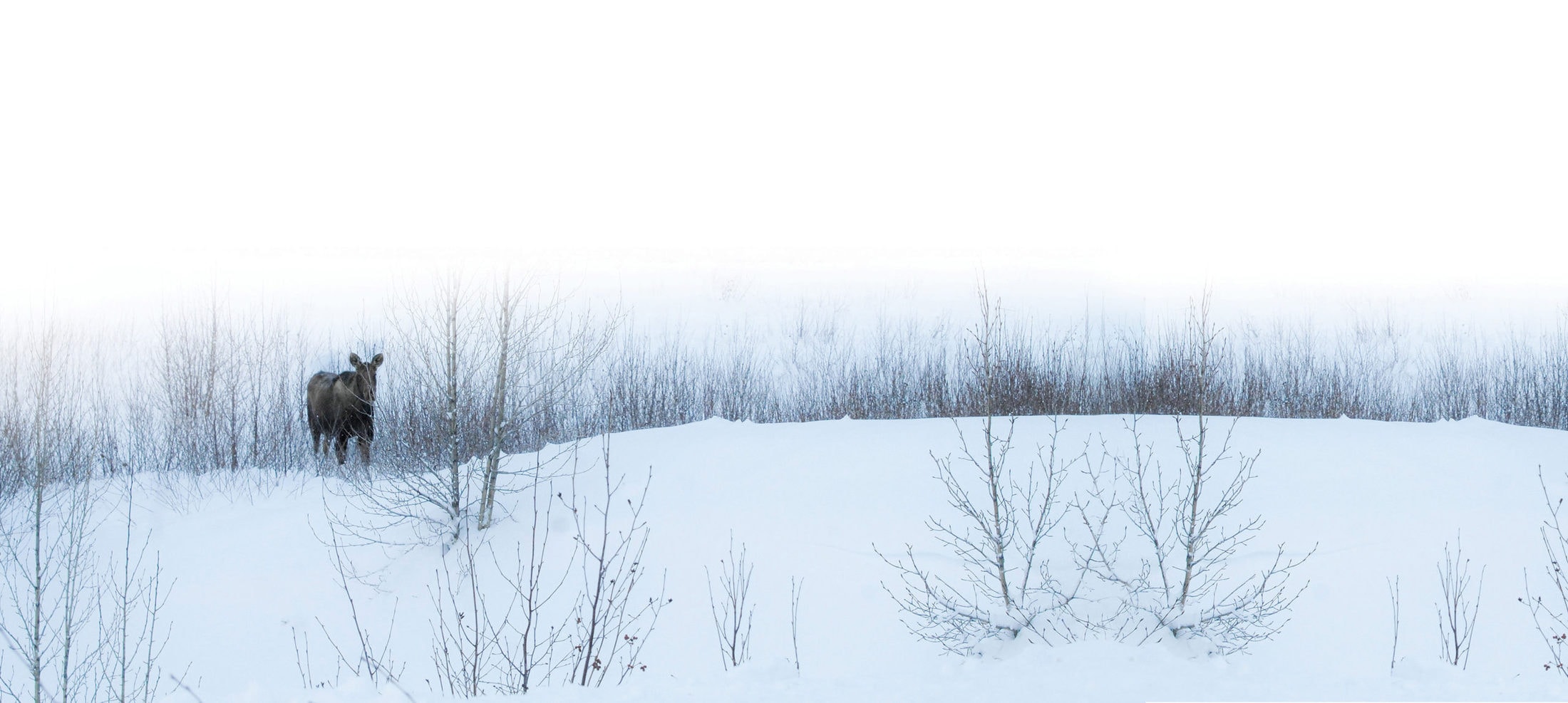
Learning My Language
An interview with Curtis Ivanoff, Superintendent of the Alaska Conference
by Erin Chan Ding
Can you tell us about growing up in Alaska?
I was born and raised in Unalakleet, a small village of 700 people in the western part of Alaska. My father is Inupiaq and Russian, and my mother is German-Norwegian from South Dakota. I was raised in the village, and I grew up with a strong sense of Native Alaskan identity. But it could be confusing at times. In the village, I was sometimes treated as if I were white. But then I would leave the village and I was considered Native. In general, Native people have to navigate two worlds.
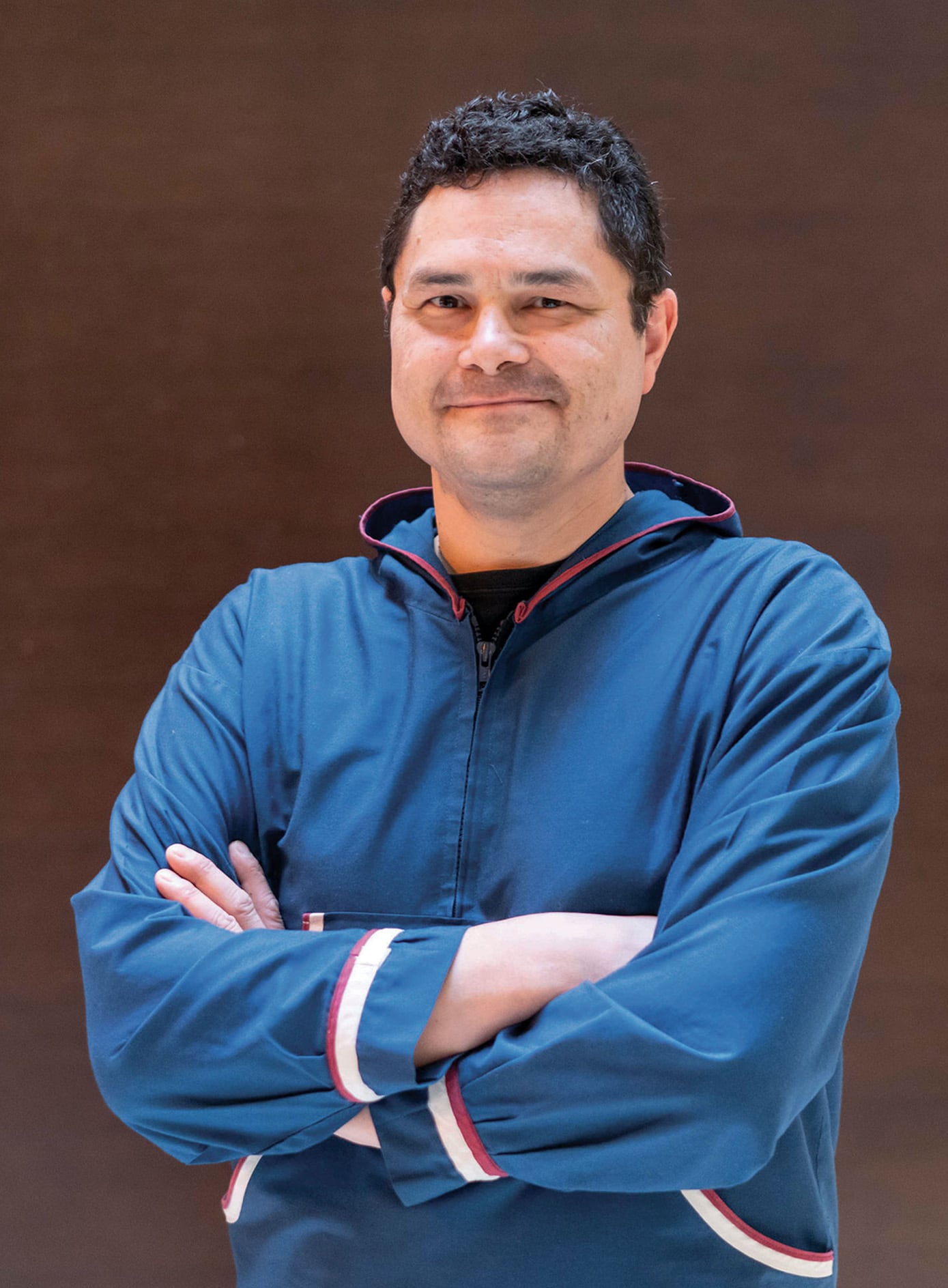
How were those worlds different?
The way time is viewed is very different. In the western world we can become transactional, and that can be partly because of how we view time. In village life, you are in tune with the rhythms of creation, and those rhythms guide how you live—when the fish are running or the berries are ready to be picked. So you’re in tune with that.
We were recently up in a town formerly called Barrow—now called Utqiag∙vik, the original Inupiaq name—where my son was playing basketball. His team was staying in a classroom that had a whole bunch of Native words displayed, including the months of the year. The meaning of January is “the time of new sun,” and February is “there’s more sun.” March means “time to dry and bleach skins in the sun,” referring to seal skins, which are used for the boats. April is “time when everyone prepares everything for the whaling season.” Our Native lives are in tune with creation.
There’s a different relationship to the land—one of interdependence, versus domination or extraction of resources for development. That can become unhealthy if we extract and suck the life out of the land in a capitalistic way.
In village life, you are in tune with the rhythms of creation, and those rhythms guide how you live.
In the western world, our lives are run by the clock. If I’m ten minutes late in the village, it’s no big deal. But if I’m ten minutes late to a meeting outside of the village, I’ll get a text within three or four minutes, saying, “I’m here, where are you?” It’s just different ways of how time is viewed.
We’ve had to adapt to living like that, but there’s no reverse adaptation. The western world isn’t going to adapt to our ways of living and values. The adjustment is always one way—unless you come to my hometown!
How did your family become part of the Covenant Church?
In 1887, the Covenant Church of Sweden established a mission in Unalakleet—that was two years after our denomination was founded. I am grateful that the Covenant brought the gospel of Jesus to our people. God had been preparing us, and God has made Godself known throughout the ages to our people. But hearing the name of Jesus was new and I’m so grateful for that.
My great-grandfather, Stephan Ivanoff, was an early convert and acted as an interpreter for Axel Karlson, the first missionary who came to Unalakeet. As I grew up, the Covenant Church was central to our family’s life. We went to Sunday school, and I looked forward to attending Covenant High School in Unalakleet, which the Covenant had started in 1954 to provide a place of training to raise up leaders for an indigenous-led church and to provide a secondary education for local students so they wouldn’t have to leave home. In that era, not every community had a high school, so students were being sent to a boarding school in Sitka, Alaska, almost a thousand miles away.
In 1985, Covenant High School closed, and so my junior year of high school I went to school in Fairbanks. That was the first time I lived outside of Unalakleet. At 31,000 people, Fairbanks is a small urban center, but for me, it may as well have been New York City. I had a hard time feeling like I fit in, even though I was playing on the varsity basketball team. There was no hunting, no snow machining, no fishing. Everything was just done differently.
How did you decide to attend college in Oklahoma? What was your experience as an Alaska Native there?
For college, I wanted to have an experience outside of Alaska. All the Pacific Northwest schools were on the quarter system, which meant I would be in class during commercial herring fishing and Bible camp, and there was no way I was going to do that! I had an aunt and uncle who lived in Oklahoma, and I’d been there one time when I was little. The University of Oklahoma was the only school I applied to, and as soon as I was accepted, I knew I was going there.
I had wanted to learn our language for forever, and I’ve finally taken a step to take an Inupiaq class. It’s a very significant thing for me. This is at the heart of who I am.
In Oklahoma, I stepped into a whole different world—not just because it was western, but it was a different regional culture, which I very much enjoyed and appreciated. I learned a lot about myself as an Alaska Native by swimming in different cultural waters. I met Kristi there, and we got married in 1993.
While I was in college, I began to wrestle with the history of this country, and the story of this country’s relationship with the indigenous peoples of this land. It became a time of real wrestling for me.
In what ways did that wrestling take shape?
I didn’t know my language. That’s a painful thing, and it’s a common story because young people were punished for speaking their language in schools that were largely run by the Bureau of Indian Affairs. My grandparents and their grandparents were punished—that’s when they were being assimilated to speak English. By the time the Covenant High School was open, students were not being punished, but they weren’t taught their language either. One former teacher described the school as being “a-cultural.” They didn’t engage with the language, yet they very much appreciated and affirmed the students for who they were in every other way.
My stepdad understands Inupiaq but doesn’t speak it fluently. The generation that was fluent—my grandparents’ generation—has been passing on. We’re losing that. I feel such a deep sense of urgency.
I had wanted to learn our language for forever, and I’ve finally taken a step to take an Inupiaq class through a tribal college called Ilisagvik College. It’s a very significant thing for me. It’s more than just learning Russian and Spanish, which I’ve done. This is at the heart of who I am.
There are language reclamation efforts happening in our state, and this is one small way to be a part of that. I would one day love to be an Inupiaq language teacher. I’m a teacher at heart. I taught Russian at a basic level when I taught in the public school. I’d love to be a part of the language reclamation and revitalization. That’s a dream.
Can you tell us about your journey of learning about the Doctrine of Discovery and why it is important for us to be talking about this in the Covenant Church?
It has been a learning for me to recognize how the Doctrine of Discovery was the justification for taking Native lands—and that the church was attached to it through the papal bulls in the 15th century. But people hardly know about this.
In the Covenant, we have a lot of learning to do. Awareness and learning are necessary for healing. Even if it wasn’t explicitly our denomination, it was a movement of the church. There was a movement in that era that to be American was to be Christian, and to be Christian was to be American. That’s something significant we need to recognize as a church. And then confess our complicity where we need to confess, and repent where we need to repent.
I had a Native professor of education history who made this analogy. In 1954, Brown v. the Board of Education desegregated schools, overturning Plessy v. Ferguson from 1896 that sanctioned “separate but equal” education. After the 1954 ruling, we could no longer segregate schools on the basis of race.
The Doctrine of Discovery has influenced our country since 1823 when the Supreme Court codified the principle of discovery into law through Johnson v. M’Intosh. Nothing has ever reversed this ruling. Our people have never had our Brown v. the Board of Education.
As Jesus followers, we should care about this, and our hearts should be broken over it. If we care about loving mercy and doing justice as a church, we should be first in line to say, “This was a wrong that needs to be righted, in our country.” I want to invite our denomination to practice solidarity with our Native communities.
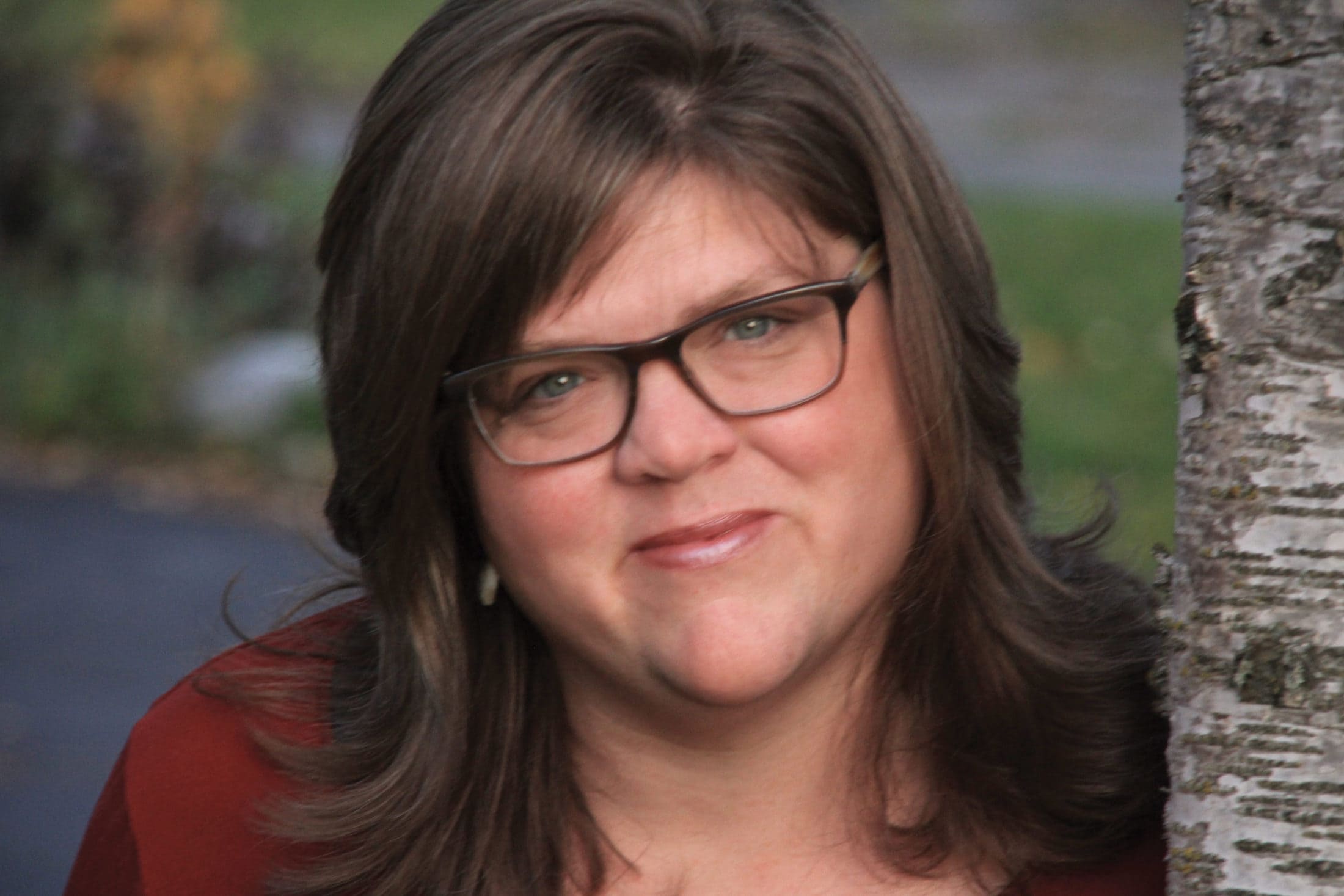
Opening My Eyes
by Kristi Ivanoff as told to Erin Chan Ding
As a student at the University of Oklahoma, I’d walked with Jesus most of my life, and I had a real heart for the Lord. One day I saw a flyer for Multicultural Day on campus. In my heart, I thought, “Why do we have multicultural day? This isn’t a big deal.” I grew up in Oklahoma and had no knowledge of Native American peoples. They were completely invisible to me.
I’m not proud of that. Then God called me into a heart for making the world right and into a cross-cultural ministry. And he brought me into a cross-cultural marriage, although honestly, I did not even realize that’s what I was marrying into.
I look at where I am now, and I feel like I’m here because of the heart of God. He has been doing major work in transforming me. I’ve been learning for 27 years, and I’ve still got a lot to learn.
When I started learning about the Doctrine of Discovery, I had to learn the terminologies of “papal bulls” and the role of the Catholic Church. In our post-Reformation context, I thought, “That’s them—it wasn’t us.” So the doctrine didn’t really mean a whole lot to me.
But at the time, the Catholic Church was the Christian Church. I know I’m not the only person who didn’t have very much knowledge of church history. Participating in the Covenant’s Journey to Mosaic broadened my understanding beyond the Native stories. It helped me to see effects of the Chinese Exclusion Act in 1882 and the common threads between those stories.
When the trauma is so closely related with the church, it’s a huge stumbling block.
The generational trauma is massive. And when the trauma is so closely related with the church, it’s a huge stumbling block. In my heart, I want people to be able to come to Jesus and walk with him and trust him. But it’s really, really hard.
We have to have our eyes opened. Journey to Mosaic is another level of scales falling off my eyes. J2M brings people together from diverse ethnic backgrounds for an interactive experience that explores and brings to light racial injustices in our region, past and present. Lament is another huge piece. What does it look like for me to lament? It’s not my story, but it is my story, because these are my people. These are my brothers and sisters.
I was reading Jeremiah last summer where he says, “Teach your daughters how to wail; teach one another a lament” (9:20). That felt like a word from the Lord to me and the women I walk with in discipleship and the healing journey.
I don’t really know how to do that, but I’m learning. So I ask, what does that mean, Lord? What does it mean to help teach my own biological daughter, as well as my spiritual daughters? What does it look like to lead them, walk with them? I’ve been praying about that, asking what does that look like, Lord? I don’t know what that looks like, so you have to show me.
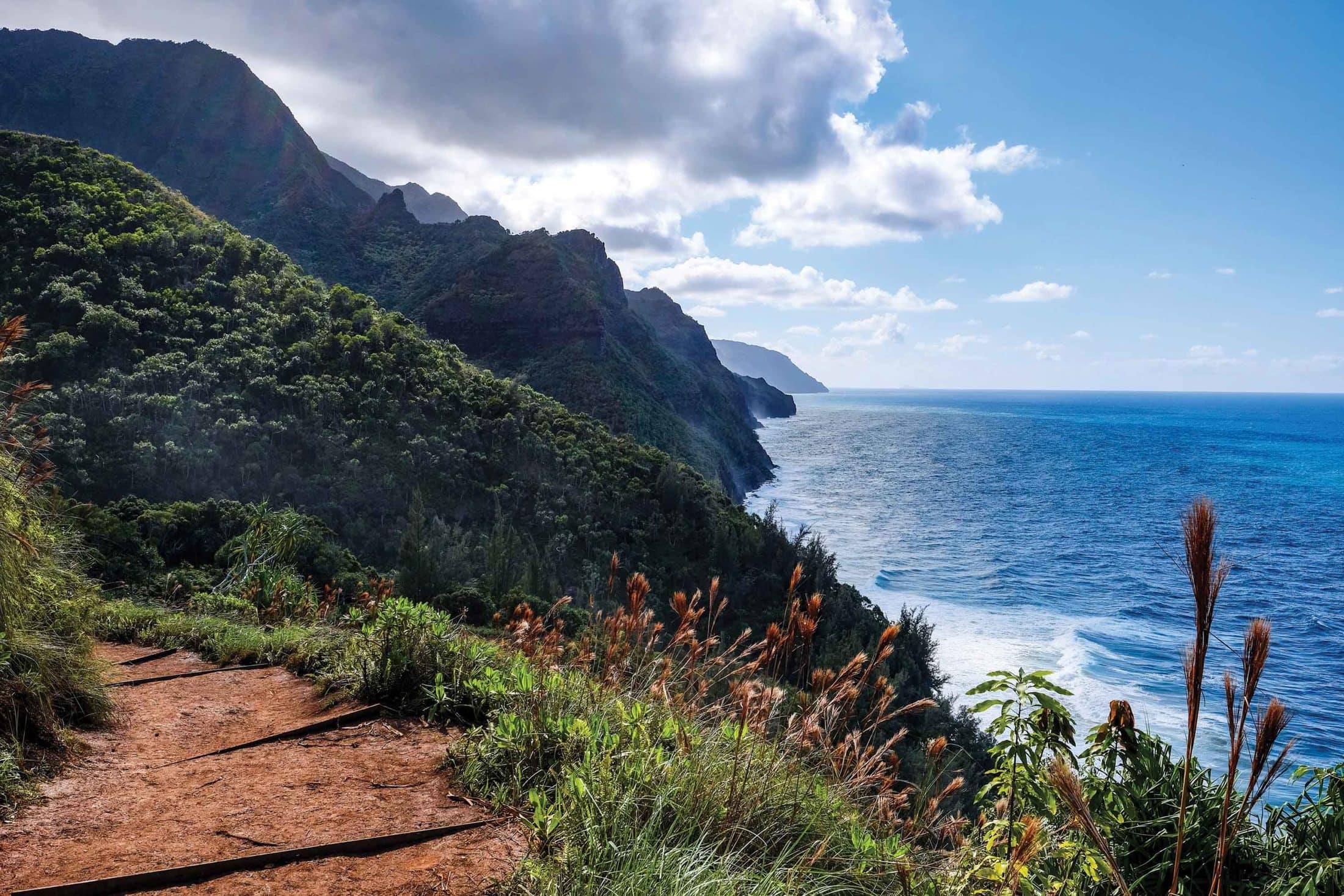
A Hawaiian Burden
Reconciling an impossible demand of identity and faith
by Jim Sequeira
Prior to my starting first grade, my mom gave me some advice I didn’t quite understand at the time: “Make sure you present yourself well. Be sure your hair is combed, that you bathe, and that your clothes are nice, clean, and tucked in. Look people in the eyes when you speak to them. You’re going to be treated differently by people because you look different from them.”
I was born and raised in Salem, Oregon, by Native Hawaiian parents who moved there from Hawai’i to attend college. Surrounded by “white ducks,” I figured I was a “white duck” too. So my preschool mind could not comprehend what my mom was saying.
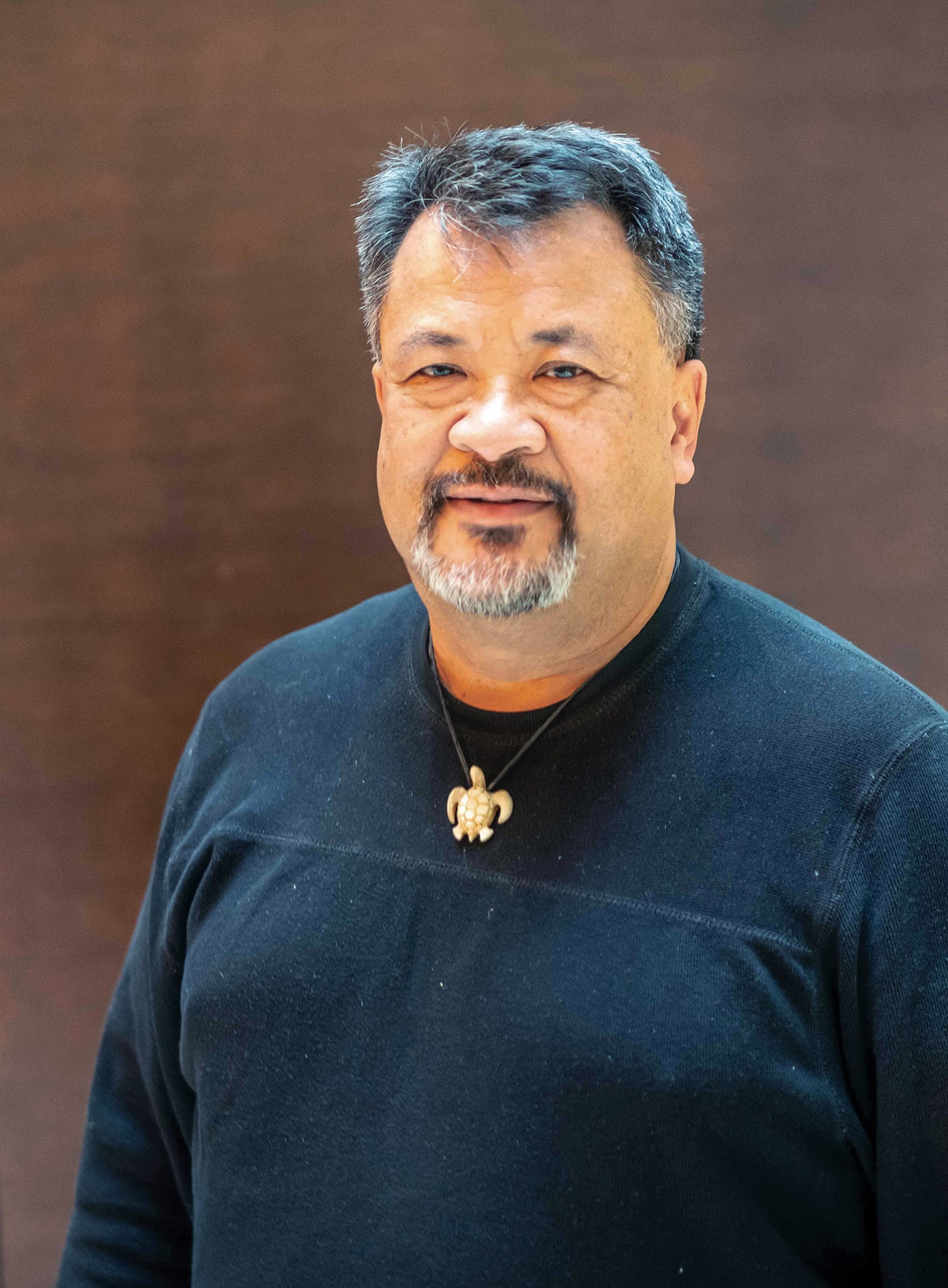
However, my first-grade class picture revealed to me for the first time that I didn’t look like all the other kids. (It didn’t help that my mom had decided to dress her post-summer dark brown little boy in a white dress shirt buttoned all the way to the top for picture day.) I embodied the Sesame Street song “One of These Things (Is Not Like the Others).”
My mom’s advice concluded with these powerful words: “Never forget, be proud you’re Hawaiian.” More than 50 years later, my mom is now in a memory care facility with Alzheimer’s, and her words still bring tears to my eyes and stir up native pride in my heart: “Never forget, be proud you’re Hawaiian.”
When I moved to Portland in 1985, I met my friend Walt, who was also Native Hawaiian. He told me that when a pastor had invited him to pray and ask Jesus into his heart, at the conclusion of his prayer the pastor said, “You’re a Christian now. You don’t have to be Hawaiian anymore.”
When the first missionaries arrived in Hawai’i in the 1820s, they referred to Hawaiians as repulsive, savages, and immorally extreme. One wrote in her journal: “Week after week passes and we see none but naked, filthy, wicked heathens with souls as dark as the tabernacle which they inhabit. The darkness of the people seems to destroy the beauty of the scenery around us.” They convinced Queen Ka’ahumanu, a Christian convert, to outlaw dancing the hula in public in 1830, arguing that it promoted heathen beliefs. The missionaries believed deeply that they were engaged in a spiritual battle. In reality, it was a cultural battle of turning Native Hawaiians into 19th-century Americans.
My mom’s advice concluded with these powerful words: “Never forget, be proud you’re Hawaiian.”
While missionaries were eager to convert Hawaiians to Christianity, they were reluctant to actually call the natives Christians. In his acclaimed history of Hawai’i, Shoal of Time: A History of Hawaiian Islands, historian Gavan Daws wrote, “Thousands of natives came to church regularly, yet only few could be called Christians.…One out of every two Hawaiians attended church, but not one in a hundred had been granted the privilege of communion with Christ.”
Eventually the descendants of the first Christian missionaries to Hawai’i formed a political party called the Missionary Party (later the Reform Party). Their aim was to establish a civilized, Christian nation, which they believed Native Hawaiians were incapable of doing. In 1893, members of the Missionary Party overthrew the Hawaiian monarchy with the help of the U.S. Marines. Their goal was to annex Hawaii to the United States. Queen Lili’uokalani was forced to abdicate her throne, which she did only to prevent the Marines from shedding Hawaiian blood. Lili’uokalani was arrested and imprisoned in a single room on the second floor of Iolani Palace for almost a year. She was a devoted follower of Jesus and believed in peaceful resistance and prayer. She looked to the church and the United States to do the right thing and restore Hawai’i’s sovereignty to the Hawaiians.
Our Hawaiian kupunas, or elders, often ask me, “Pastor, how does being Hawaiian and being a Christian work out?” In other words, “Can our Hawaiian identity and culture coexist with Christianity?” I’ve received calls from hula instructors, asking if particular dances are in conflict with the Christian faith. Even after becoming a Jesus follower, I wrestled with my family stories, my Hawaiian spirituality, traditions, ceremonies, and protocols. Were those perceived superstitions at odds with my Christian faith?
I believe it was so easy to overthrow the monarchy because Hawaiians were what I call “Genesis 12 people.” In that passage, the Lord says to Abram, “Go from your country, your people and your father’s household to the land I will show you. I will make you into a great nation, and I will bless you; I will make your name great, and you will be a blessing” (vv. 1-2). God is saying he will bless Abram and his people so they will be a blessing to others. In other words, when you receive well, you give well.
Hawaiians understood that their land and their culture was a blessing from the Creator, and as they were blessed, they freely shared what they had to bless others. While Christian colonialism did not have room for my Hawaiian culture and identity; the Triune God did. This was when I began to see how my Hawaiian identity and my Christian faith could and did coexist. God the Father had begun a good work on some remote islands in the middle of the Pacific Ocean long before the missionaries arrived.
While Christian colonialism did not have room for my Hawaiian culture and identity, the Triune God did.
Today I serve as a facilitator on the Journey to Mosaic (J2M) in the Pacific Northwest Conference. J2M brings people together from diverse ethnic backgrounds for an interactive experience that explores and brings to light racial injustices in our region, past and present. When one of my co-facilitators, Lenore Three Stars, who is Oglala Lakota from the Pine Ridge Reservation in South Dakota, shared her story about the Native American peoples, it was the first time I had heard about the Christian Doctrine of Discovery.
Learning about this doctrine helped me make sense of why the missionaries dehumanized and demonized Hawaiians and treated them as non-people—it was because they believed Jesus is only present among the white people. Unless white missionaries brought Jesus to indigenous peoples, they believed, Hawaiians and Native Americans were void of Jesus and God and lived in darkness.
Yet the psalmist tells us differently: “Where can I go from your Spirit? Where can I flee from your presence? If I go up to the heavens, you are there; if I make my bed in the depths, you are there. If I rise on the wings of the dawn, if I settle on the far side of the sea, even there your hand will guide me, your right hand will hold me fast. If I say, ‘Surely the darkness will hide me and the light become night around me,’ even the darkness will not be dark to you; the night will shine like the day, for darkness is as light to you” (Psalm 139:7-14).
The Doctrine of Discovery was not about evangelism or bringing hope through Jesus. Rather, it was intended to advance white colonizers and to conquer, eradicate, and subjugate people of color and their cultures, traditions, and ceremonies through every means possible, including genocide. Those who have suffered the most, lost the most, and paid the biggest price because of the Doctrine of Discovery have been the Native Americans and the First Nations people. They continue to suffer economically, emotionally, spiritually, and culturally.
Through the Christian Action Commission, the Covenant is in the process of working on a resolution to repudiate of the Doctrine of Discovery. This is a gigantic task and a gigantic responsibility with a lot at stake. Throughout our history, the United States has made more than 500 treaties with Native Americans. And more than 500 of those treaties have been broken. As the Evangelical Covenant Church moves forward to repudiate the Christian Doctrine of Discovery, let us not simply reject it by having the right belief. Let us address the injustice by doing the right practices.
To learn more about the effects of the Doctrine of Discovery and how it is connected to Christianity, check out Unsettling Truths: The Ongoing Dehumanizing Legacy of the Doctrine of Discovery, by North Park Theological Seminary professor Soong-Chan Rah and speaker and activist Mark Charles, at CovBooks.com.


